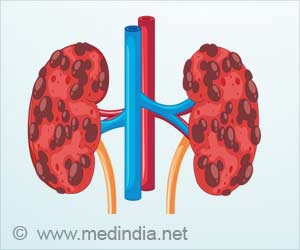
Researchers make a compelling, evidence-based case for expanding the diagnostic workup to include cardiac arrhythmias when a normally continent individual experiences nocturnal bedwetting. Their study and recommendations of how it has been tackled have been discussed in the journal
.
The sudden death of a 23-year-old woman with chronic QT syndrome type 2 after experiencing episodes of urinary incontinence in two isolated beds, with no other symptoms, prompted researchers to examine practical protocols among physicians who treat patients with unexplained bedwetting. They conducted an anonymous web-based survey, asking doctors to select diagnostic tests they would perform on a patient who had unexpected and unexplained bedwetting and no other symptoms. Of the 346 respondents, 102 were pediatricians, 73 family physicians, 57 internal medicine specialists, 35 residents, 37 interns and 42 advanced medical students. Of these, 114 are senior physicians with more than three years of experience.
Most of the respondents in the survey said that they would do a urialysis and a kidney ultrasound following the occurrence of aneurysms to diagnose urinary tract disease. Many also opted for testing for diabetes and abnormalities in the urinary tract. Although 19% of people recommend having an encephalogram, they consider the possibility of nocturnal seizures to be a possible cause. This finding proves that cardiac arrhythmic seizures are not considered part of a differential diagnosis of enuresis that is not described in practice.
“We are very surprised and extremely concerned by the lack of awareness among primary physicians about the possibility of nocturnal arrhythmogenic seizures caused by long QT syndrome,” noted lead investigator Sami Viskin, MD, Sourasky Tel Aviv Medical Center and Sackler School of Medicine, Tel-Aviv University, Tel-Aviv, Israel. “The condition, which is highly lethal when left undiagnosed and untreated, is easy to detect with an electrocardiogram and is highly responsive to appropriate therapy.“
The medical community recognizes that arrhythmia is a major cause of daytime syncope, and the electrocardiogram is considered an essential tool for its evaluation. It is important to raise awareness of the fact that the same arrhythmias that cause dizziness in an “awake patient” can also cause nocturnal seizures at night during sleep. If these nocturnal seizures are not seen, the only clue left from the dramatic event is to urinate or betwetting.
READ RELATED: People on TikTok Are Talking About How Excruciating IUD Insertion Can Be
Dr. Viskin also said that the underlying diagnosis for most cases of aneurysms is not an cardiac arrhythmic syncope, especially in younger patients. However, it is important to explore this possibility, especially when events are very close, and also noted that “An electrocardiogram is an inexpensive and easily performed test that is invaluable for diagnosing potentially fatal diseases that can be easily cured.“
Dr. Viskin further said, “Inquiring about a familial history of sudden death should be an integral part of every medical consultation.” Failing to recognize a malignant family history can be pivotal: post-mortem investigation about their patient uncovered family history including genetic predisposition and instances of sudden death.
In an accompanying editorial, Dr. Patrina H.Y. Caldwell, FRACP, PhD, and Prof. Jonathan R. Skinner, MBChB, MRCP(UK), FRACP, MD, FHRS, of Sydney Children’s Hospital (Randwick and Westmead, Australia), agreed that taking a family history for early death, along with an electrocardiogram, is recommended as a quick, cheap, universally available, and effective way to prevent a rare lethal outcome.
Source: Medindia
Source:






